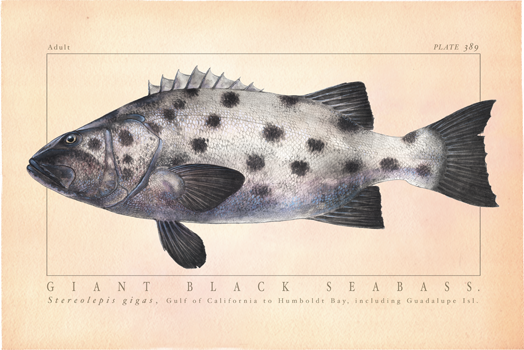
They say, “A picture is worth a thousand words.” As cliche as it is, that phrase could not resonate more clearly for this visual learner than when I am flipping through a 10 lb. biology textbook full of thousands of words. I can read through pages and pages describing some ecological process or critter life cycle and be completely bogged down until, I hit the magical beacon of hope that brings it all together. An illustration. The same holds true for magazines, aquarium signage, field guides and I.D. books. Sometimes (dare I say usually)… the picture can tell you so much more. If done properly, it can completely transform a difficult idea into a simple and easily communicated concept.
Often, as scientists, I think we take these helpful diagrams for granted. Where do they even come from?! My first thought was little science minions, like Despicable Me status, locked up in some room at the publishing company being forced to draw out figure after textbook figure. But, that seemed to simple and obvious a conclusion. So I went looking and I found one. Not a minion (though that would be awesome), but a scientific illustrator.
Amadeo Bachar is a freelance science illustrator and fine artist. He teaches digital illustration at the Science Illustration program at California State University, Monterey Bay. I actually met Amadeo a couple years back at a Fishing Expo and was so struck by the detail of his artwork that I knew he would be the perfect person to talk to when it came to learning more about the unique art that is biological illustration.
Alex Warneke (AW): So Amadeo, you are a biological illustrator, what exactly does that mean?
Amadeo: I guess I would consider myself more of an illustrator that carries a large quiver of illustration techniques. One being biological illustration or in more general terms, science illustration. This requires a keen sense for accuracy in subject matter and a basic to intermediate understanding of all facets of science from nano-technology to astronomy. Most of the time my goal is to make a particular science accessible and understandable through illustration to the general public
AW: Was this always what you wanted to do?
Amadeo: I didn’t really know what I wanted to do. I knew in junior college that I did not want to be an artist in the traditional sense. I knew after a BS in marine biology that I did not want to be a researcher/scientist. After a couple years building up my portfolio I decided that science illustration was a good way to blend the two together and follow some paths a little less traveled.
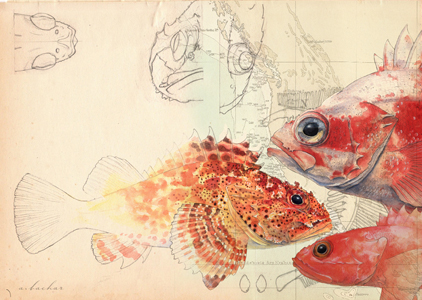
AW: Who are the types of groups that you work for?
Amadeo: Universities (CSUMB, UCSD, Stanford, Harvard), magazines (National Geographic, Scientific American), research groups (MBARI, Seafloor Mapping Lab), state and county funded outreach and education, etc..
AW: No doubt that natural talent plays a huge role in this type of career path, I mean I can draw a pretty mean stick fish myself, but is there more professional education/training that is needed?
Amadeo: The program I teach part time in at CSUMB is a good start. The program teaches students sound technical skills, tricks of the trade and good business chops.
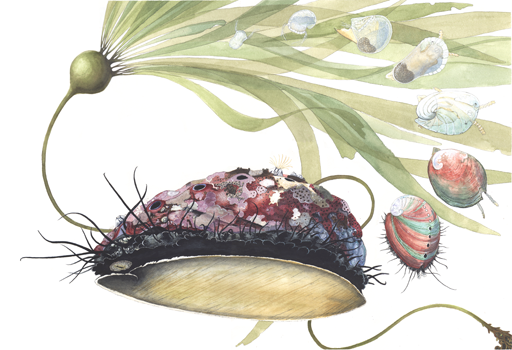
AW: When creating a piece to be placed in a field guide or at an aquarium. Is there a line between being artistic and being realistic?
Amadeo: Just so long you are accurately representing the critter, you can be as artistic as you want. In other words, it’s ok to see brush strokes or pencil lines just so long those marks don’t mis-represent the anatomy of the subject that the illustration is intended to display.
AW: Along that same trend, how do you “study up”? I would probably just watch hours and hours of “Finding Nemo,” but I imagine it’s a bit more involved than that, getting all of those important details just right.
Amadeo: For my marine work, lots of diving and taking pictures. For different clients, It’s like studying for a test. Request as much material related to the illustration and read up, learn it and after digesting it craft it into a visual that accurately says it all simply and clearly.
AW: Could you briefly take us through the process of creating a piece from start to finish?
Amadeo: Research, research, research, sketches, research, sketches… haha Ok, you get the idea. Research takes a big part of the process, It is the foundation. Your illustration is only going to be as good as the references you have and those references are collected and understood through research. After this it comes down to making rough sketches outlining critters, form and general composition. From there, revisions are usually requested by the client and then I move on to rendering in whatever medium is best suited for the distribution of the illustration. Is it web, is it magazine, is it both plus merchandising, etc… Once this has been decided I start the final rendering of the subject.
Amadeo Bachar paints yellowtail from Mike Santaella on Vimeo.
AW: Personally, when I am doing some hard-core lab work, I bust out the Billboard Top 100 playlist. Do you have a go to mixed tape when you are working?
Amadeo: Sci-fi movie director commentary, TED talks, Sports documentaries and a couple Pandora stations usually do the trick as good working noise.
AW: Dual question. What is the best illustration you have ever done? And on the other side of the pillow, the hardest one you have completed?

Amadeo: The best illustration is always the next illustration. Things are so rushed sometimes, so I seldom get to output a perfect work. Heck, even when I have time I don’t come close to perfection, so I guess that’s just an excuse. Illustrating comes pretty easy to me. The hard part in the process in a small handful of instances is the client. Because it’s a team effort, it takes good communication between client and illustrator to make the process go smoothly. However, as always, it’s a two way street, so I try to be very aware understanding what they want and managing communication if I sense there is a breakdown.
AW: Inverts or Vertebrates?
Amadeo: Are both delicious? … ok, inverts.
AW: Who is your role model or if you don’t have one, what inspires you?
Amadeo: My daughter, wife, friends, colleagues, students are my role models. Along with them, inspiration from my work comes from the amazing complexity yet simplicity of the natural world.
AW: As scientists, we geek out over new fangled technology (*Cough* Cough* Dr. Martini *Cough*). How has technology played a part in your line of work?
Amadeo: It’s played a huge part. You cannot succeed as an illustrator if you are not competent in using digital painting, production and post production programs. It’s also played a role on the research end. As the sciences develop new technology, they are essentially creating better eyes, ears, senses. The imagery and data from these measurements really make illustrations better, more accurate and easier to understand.
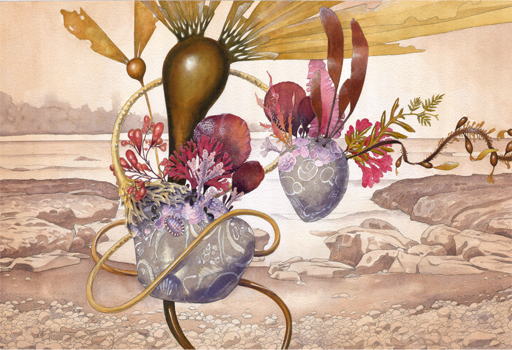
AW: You now teach courses on biological illustration at California State University Monterey Bay, can give us a bit of the 411 on that program?
Amadeo: The Science Illustration Program is a single cohort program that lasts three quarters. Students learn and hone traditional and digital techniques in classes ranging from field sketching to zoological illustration covering assignments from intracellular diagrams to animations. Along with this, completing an internship is a requirement for graduation, our students really come out with a sound foundation in science illustration. Just this year alone, we have students interning at National Geographic, Smithsonian and MBARI to name a few.
Side note: For those interested in CSUMB’s Scientific Illustration Program: Discover more here.
AW: What is the number one piece of advice you give your students?
Amadeo: As I mentioned before, your illustration will only be as good as the references you have, so do sound research, ask questions and find good references.
AW: Amadeo. It has been real. Thanks for taking the time to chit chat and share with us a little piece of your world.
For more information on Amadeo’s work as an artist and illustrator, please visit www.abachar.com

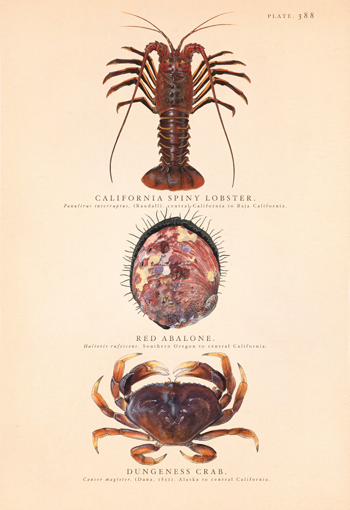


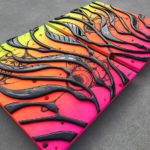
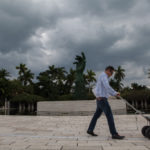
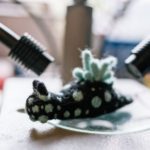
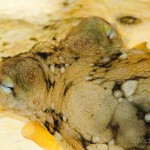
Uhhh SO FREAKING COOL! I hadn’t even thought about asking such an interesting question as to where all the illustrations come from, but dang that was awesome. I’d kill for his talent, but I’d settle for an original piece. Keep it up Warneke!
The yellowtail video is mind blowing. Literally it would look amazing in my room.
I have three pieces of Amadeo’s work on my front room wall and another waiting to go up. I’ve been a huge fan of his for years! AWESOME talent!!! I have the “crusties” and the “So. Cal fishes” in the article and others. Check this out, watch the “painting yellow tail” video and go look at his web page. His “reef” painting is incredible!
As a child I always loved looking at scientific illustration (sea life especially), and I still do. Pretty amazing work.
Excellent article, video and illustration work!
Wow, I can’t believe I just found this interview today – awesome! Amadeo’s work is incredible. Great interview, Alex!